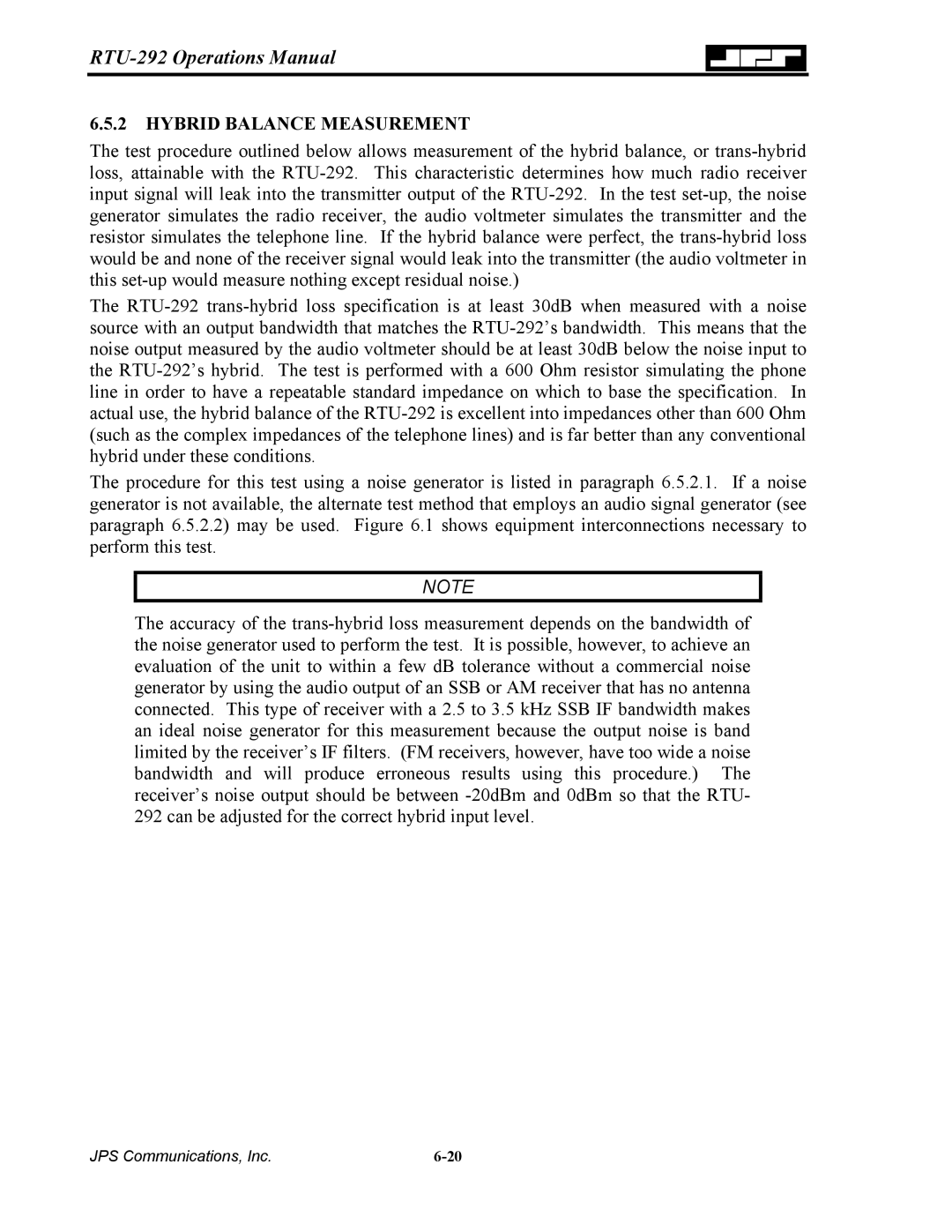
6.5.2HYBRID BALANCE MEASUREMENT
The test procedure outlined below allows measurement of the hybrid balance, or
The
The procedure for this test using a noise generator is listed in paragraph 6.5.2.1. If a noise generator is not available, the alternate test method that employs an audio signal generator (see paragraph 6.5.2.2) may be used. Figure 6.1 shows equipment interconnections necessary to perform this test.
NOTE
The accuracy of the
JPS Communications, Inc. |
